Biostasis Resurgent: Global Cryonics Summit 2024 Report
A new multi-organization cryonics conference
The Global Cryonics Summit 2024 was held in Miami, Florida on July 20-21. This is the first real cryonics conference in the USA since the Alcor-50 conference I organized back in 2022. Some of us have enjoyed smaller meetings and several events in Europe but others have had no chance to gather with other biostasis and cryonics supporters. Conferences are a great way to catch up on research and organizational plans and to talk with others.
I have long since lost track of how many cryonics conferences I have attended since the first one – the Lake Tahoe Life Extension Festival in 1986, organized by Fred and Linda Chamberlain. The Summit was a worthy addition to the list. Lots of credit to Max Marty and his team for making this happen.
Instead of a hotel or conference center the venue was Ampersand Studios on 17th Street in Miami. It is a pleasant space that provided two meeting rooms and places to talk with people.
Attendance was good, with a fair number of people I did not know. The CrowdStrike software glitch that shut down or delayed many flights could not stop us! The group was indeed global with active cryonicists from Australia, Europe, Mexico, and many other countries. Speaking for myself, the general feel of the event was welcoming, friendly, and fun.
One thing I did not like was the parallel sessions. Sometimes they cannot be avoided without rejecting a lot of speakers but they can be frustrating and force you to miss sessions of interest. At future conferences, greater use of “lightning talks” might allow all desired speakers without parallel sessions. The lightning talks went very well. Details below.
Highlights
I cannot cover all the talks in any detail. What follows are a few highlights to give you a sense of the flavor of the event. The proceedings were filmed so videos will become available at some point.
After the opening, Anders Sandberg kicked things off with a big-picture talk on “Envisioning Cryonics Futures.” I have known Anders since the 1990s and have always found his talks to be fascinating, often big-picture thinking. With the closing of the Future of Humanity Institute, Anders continues his insightful work at the Mimir Center For Long Term Futures Research.
After this was the President’s Panel which deployed the same format as at the Alcor-50 conference, this time including Emil Kendziorra of Tomorrow Biostasis, Kai Micah Mills of Cryopets and Co-founder of the cryonics research funding organization CryoDAO, James Arrowood of Alcor, and Peter Tsolakides of Australia’s Southern Cryonics. Emil teased the extension of Tomorrow Biostasis to the United States (with details in a later talk). Kai explained how cryopreserving pets will bring more people into cryonics.
Arrowood mentioned the cryonics display associated with Frozen Dead Guy Day and the hotel from The Shining. I have doubts about the desirability of associating cryonics with a goofy festival and more so with a disturbing horror movie which ends with Jack Nicholson’s frozen dead face starting at you.. He also made the peculiar statement that “Alcor doesn’t want to grow.” This conflicted with his slightly later statement that for Alcor, controlled growth is the key. Excessive growth is not and never has been the problem. Alcor membership has barely grown for years. It would be wonderful if biostasis organizations really had reason to worry about out of control growth.
Average response times and average length of ischemic delay have changed little over time. That was a major and disturbing finding in the meta-analysis project conducted by Aschwin de Wolf and Michael Benjamin. Arrowood noted the unusually large number of Alcor cryopreservations in the last year or two. The potential damage from ischemic delay can be measured with the S-MIX score (standard measure of ischemic exposure). The average for Alcor cases had been 3.56 (lower is better). Arrowood claimed that the recent score was 2.28. However, it seemed that this score was achieved by omitting straight freeze cases (8? 11?), given Arrowood’s statement that an S-MIX cannot be calculated for straight freeze cases, which is incorrect. In fact, straight freeze cases almost invariably have high S-MIX scores because these are cases without SST.
We were also told that the DART program was paid for with a specific donation. That is good news but lacks specifics. It would be helpful to know if the donation will cover the program indefinitely or for a certain number of years.
Arrowood acknowledged that Alcor should do better communicating with members. Cryonics magazine has not been published in a while, Alcor News comes out much less than monthly, and Alcor does not have an active blog nor makes educational videos.
Next up, Emil Kendziorra talked about Tomorrow Biostasis’ expansion into the United States. Tomorrow Bio has been growing rapidly and has 600 or more signed-up members already. I was expecting growth to slow once this relatively new organization picked up members in Europe who had been waiting for an organization on the continent. So far, growth has continued. Tomorrow’s entry into the US is excellent news. It will put pressure on existing US biostasis organizations to keep improving while helping to expand the market to the benefit of all. Initially, standby will be available in California, Florida, and New York, followed by Portland later this year, and the entire US in 2025.
As the main man behind Tomorrow, Emil is also closely involved with CryoDAO and Oxford Cryotechnology. He said that Tomorrow is helping local groups with training in the Netherlands, France, and Italy. They have six patients and conduct at least 20 training sessions per year. Our own Biostasis Technologies helps to provide oversight. Tomorrow has already advanced practice by providing whole body field cryoprotection and will soon offer whole body intermediate temperature storage (ITS). This uses a different approach than the one recently patented (but not yet offered) by Alcor.
I was disappointed that no one from Cryonics Institute was present to represent the organization and answer questions. That was a missed opportunity.
Aschwin de Wolf and the BT team
Aschwin de Wolf, CEO of our own Biostasis Technologies, gave the next talk on “Emerging Technological Trends in Human Cryopreservation.” Aschwin stressed the importance of feedback in cryonics and surveyed emerging trends in biostasis. Feedback includes quantification of case metrics (including the S-MIX score), CT scans, and meta-analyses. Emerging technologies include universal field cryoprotection, brain-only preservation, and aldehyde stabilization. Aschwin explained the role of Biostasis Technologies in developing standards for cryonics procedures, full time case review and analysis, organization of cryonics case data and meta-analysis, scientific and clinical advice, education and training, and assistance in creation of cryonics capabilities.
Aschwin also talked about brain-only preservation. We did a case of this at Alcor (the Steve Coles case) a decade ago but Tomorrow Biostasis is the first organization to offer it as a regular option. Aschwin noted that brain-only is more publicly acceptable than the isolated head approach in traditional “neuro” cases. Because of the way the brain is removed, open-casket burials are feasible for the family. This process also permits immersion fixation and cryoprotection, makes sample processing easier, makes it easier to store and move a patient during emergencies, and has a lower long-term maintenance cost.
Progress in biostasis continues with Biostasis Technologies and Tomorrow Biostasis leading the way. He also talked about the benefits of Liquid ventilation, brain-optimized cryoprotection, new transport options including shipping at cryogenic temperatures and brain transport, as well as fracture-free storage through ITS.
The rapid cooling possibilities of liquid ventilation (LV) have remained out of reach despite decades of interest in the idea. Recently, BT’s prototype – designed and built by Charles Platt – has been built and tested and is ready to be used in select cases. Current research involves investigating buffered chilled saline instead of a perfluorinated compound (PFC). Another Platt innovation, a new, highly foldable but strong ice bath, was also shown.
After lunch and a video update from China’s cryonics organization, Yinfeng, we were treated to several research briefs. Names beginning with “r” dominated starting with Ramon Risco of the University of Seville on magnetic resonance guided ultrasound for rewarming cryogenically stored tissue. Currently, the largest biological mass that has been rewarmed this way is a mouse heart but Ramon believes the process can be scaled up greatly.
Ramon may be the leading proponent of high intensity focused ultrasound (HIFU). He observed that a considerable market exists for ultrasound cryopreservation: Organ transplantation, fertility preservation, drug discovery and cancer treatments, preservation of biodiversity, basic medical research, trauma care, genetic and cell therapy, and space travel. We will try to can get Ramon to write for this blog; until then you can find out more in his latest paper: “HIFU Rewarming of Organs After Cold Preservation: Ex Vivi Assessment of Heart Performance in Murine Model.”
Ralph Spindler of 21st Century Medicine talked about vitrification and mouse memory. He explained memory molecules (neurotransmitters and proteins) and how we can best preserve them.
Borys Wrobel from the European Institute for Brain Research talked about preservation of large mammalian brains with connectomic quality. Although he is from Poland, Borys works with a Dutch cryonics group which has its own response vehicle. He also conveyed his work with the Brain Preservation Foundation to optimize protocols, miniaturize equipment, reduce dead volume, enable high temperature storage, and to conduct brain banking.
Regina Monaco gave a fascinating brief talk on teaching and testing neural cells. She talked about an idea I have favored for a while: training neurons to perform a task, cryopreserve the tissue, rewarm it and then test it on the same task. The task I was especially interested in was flying a virtual plane in a flight simulator. A simpler version involves the primitive video game, Pong. Regina credited discussions starting back in 2016 with Hugh Hixon and Greg Fahy on inducing learning using chemical induction of LTP. A major advance can be made with a new technique with a system to train neural cultures. (See the paper, “In vitro neurons learn and exhibit sentience when embodied in a simulated game-world.”) I look forward to further research (underway) in which rat hippocampal neural cultures are trained, cryopreserved, rewarmed and then tested.
The Biostasis Roadmap is an ambitious and welcome project that was explained by Nathan Cheng along with Emil and Andy McKenzie. The value of a technology roadmap for biostasis: a coherent plan attracts talent; critical path work is lagging; and there are numerous investor perception issues. The Roadmap looks for research and technology paths for indefinite lifespan, sets well-defined objectives with key technical milestones, and specifies actionable projects with time and cost estimates.
Research areas include pre-cardiac arrest, post-cardiac arrest stabilization, preservation compounds, procedures, quality metrics, long term storage, and restoration. Emil followed up with a closer look at preservation compounds: cryoprotective agents, chemical fixatives, and blood-brain barrier challenges. The Roadmap has its own roadmap: 1. Update annually. 2. Attach organizations. 3. Survey of neuroscientists. 4. Better cost estimates.
Emil Kendziorra
Since I had already heard the short version of Ramon Risco’s talk I went to the parallel session by Robin Hanson where he warned us of culture drift. Robin has become very interested in culture from an economist’s point of view. He has also become concerned about the impending slowdown in innovation as our societies age and shrink. He distinguished innovation in cultures from innovation of cultures, the latter of which is slowing. Robin noted the anti-children trends and that we passed “Peak Baby” in 2016. Innovation will fall drastically as population growth turns into a population shrinkage. (Unless AI can fill the gap.) Robin thinks we have 60 to 90 years within which to create artificial general intelligence or to otherwise solve the aging and revival problems. After that, it may be centuries before trends improve.
Bill Faloon related the “History of Precedent Setting Legal Victories.” I had heard the material before but enjoyed his compelling presentation again. You can find a lot of valuable historical information on these legal victories at Cryonicslegal.org. BRLS (previously Life Extension Foundation) has given $220 million to cryonics over the years. They are turning their focus to revival research and have put aside $50 million for that purpose.
On Saturday night, dozens of us converged on Zoi Restaurant and Lounge for dinner and chat. We were outside – the humidity was bearable by that time – next to a wedding. I am not sure which group had the most fun. Many enjoyable conversations were had with old and new acquaintances but some of us dragged ourselves away at a sensible time because we were giving talks the next day.
Sunday July 21
I missed the round-table discussion from the conference organizers on how to develop the cryonics community because I was worrying over my talk. I arrived to hear my colleague Houston Westfall on The Consortium. This may sound a little intimidating but it is currently an informal network of cooperating organizations with a shared interest in maintaining and improving standards in biostasis. Houston educated the audience on the activities of the Biomedical Research & Longevity Society including the foundation of Biostasis Technologies and the development of Resurgence Biomedical Sciences. The Consortium aims to identify problems and solutions in biostasis.
Gregory Fahy
Everyone was eager to hear Greg Fahy’s talk on “Beyond Ultrastructure: Getting to Suspended Animation.” Greg covered so much that I cannot realistically summarize it here. You will need to watch the video. Some of the points he covered:
*It's important, for many reasons, to establish brain viability, not just structural preservation, after cryopreservation.
*First evidence of brain metabolic viability with no drop in ATP synthesis after perfusion with 1 Molar (1 M) M22: a good start!
* Lots of slides showing experiments using various concentrations of M22 cryoprotectant and various amounts of SDS to open the blood brain barrier. Bottom line: finer tuning of SDS concentration will be needed before it can be applied to cryonics cases, but a promising concentration range was identified.
*Greg presented results of more than four hours of brain viability testing, showing that if EEG signals are not seen soon after washing out cryoprotectants, they can reappear after longer recovery times, and that stable brain metabolism can be maintained for over 4 hours, which is more than long enough to demonstrate EEG recovery.
On a practical level, Greg said that during the period of brain hypothermia before cryoprotectant perfusion, continuous perfusion can greatly improve viability. Working with Ralf Spindler and Regina Monaco, he wants to do more work on proving memory retention in mammalian neurons and brains in the near term. Greg also presented more results with cryopreserving rabbit kidneys – 21CM has achieved normal rabbit kidney function for over 1 year following vitrification of a kidney last July. The rabbit with the cryopreserved kidney is just fine.
He also talked about further elimination of cryoprotectant toxicity, referring to collaborative work at the University of Texas and the University of Alabama and independent work at 21CM looking at the role of heat shock and other stressors on toxicity. For example, Greg conveyed results using hydrogen peroxide pretreatment to improve survival of C. elegans by more than a factor of 10 (to around 90%) after exposure to 75% M22 at room temperature, and the extension of that work to mouse kidney slices, in which hydrogen peroxide pretreatment completely eliminated the drop in tissue viability caused by exposure to 75%-100% M22 at room temperature for 40 minutes. This also works in whole rabbit kidneys. He has found four new cryoprotective agents. And there was much more!
After lunch was a Q&A with James Arrowood for Alcor. I covered that together with the President’s Panel above. After that was a set of “lightning talks.” These went really well – concise presentations that made good use of limited time. Aubrey de Grey made some suggestions related to Natasha Vita-More’s survey. (This would have been more suitable after her talk.) He mentioned forms of pre-preservation information that could be useful in revival.
Peter Voss – a leading proponent of an approach to artificial general intelligence (AGI) different from the currently dominant approach – talked on “AGI to the rescue.” What if we had a million AI medical researchers? LLMs are not going to lead to AGI. Instead, Peter proposed what he calls “cognitive AI.”
Jose Cordeiro told us that Spain has had six cryopreservations since 1989 with two of them being this year.
Next, Maria Entraigues presented a moving video about the cryopreservation of her mother, Beatriz. Very nicely done.
Maria Entraigues
Taya Maki followed, mentioning the work of a doctor using VR for death anxiety. Charlie Kam showed a great video of an Alanis Morrisette song with cryonics lyrics. Charlie did a remarkable job fitting the new lyrics to Morrisette’s song with Carrie King sounding very much like her. Carrie Radomski delivered a talk on the Futurist Club, a new cryonics-centric members club based in Canada, and their undertaking of an impressive renovation project for their facility in downtown Calgary. Nuno Martins concluded with a short talk on brain-computer interfaces.
I was on next. My topic was “Excellence in Cryonics: Semblance, Substance, and Standards.” For biostasis and cryonics to flourish we need an appealing and convincing image, the operational substance to back up that image, and a focus on standards to keep biostasis organizations focused on excellence and innovation. Much of my time is focused on communication so I talked mostly about that.
One of – perhaps the – common objection to biostasis and life extension in general is that it will add to overpopulation problems. I have written about and talked on this topic for decades. To anyone paying attention, the overpopulation fear is outdated by over half a century. Many people are very slow to catch up with reality. Since population is such a frequently declared objection, I discussed the United Nations’ updated global population projections released recently.
The UN typically estimates population growth as higher than other sophisticated estimates (IHME, Wittgenstein Centre). Even so, compared to just two years ago they brought closer their estimated date for global population to peak. Population projections have struggled to keep up with the accelerating rate at which fertility rates fall. Life extension, including biostasis, can make a modest contribution to reducing the looming problem of population decline.
We should push to do more life extension research. At the same time we should be realistic about how long it will be until we can do much about aging. Research in biostasis pays off more quickly. We should put heavy emphasis on biostasis – both as a personal, practical measure and as a set of research goals.
I also talked about effective education and communication, the role of Biostasis Technologies in this work, and the importance of matching communications with excellence in practices. I concluded with some thoughts on standards and the possible role of industry accreditation.
Natasha Vita-More gave the next talk, invigorating the group and blowing away mid-afternoon dopiness, on “Cryostasis Revival: Next Steps.” For biostasis to become more accepted, people need to have a clearer idea of how revival and re-entry might work. Natasha delved into this essential topic by researching and developing a range of options for future bodies, including bio-identical growth, synthetic construction, AI-nanorobot engineering, and regenerative solutions. She also conducted a secondary analysis on re-entry methods, focusing on immersive-tech experience and neurological tendencies, and inclinations that could influence identity and social issues, such as the uncanny valley phenomenon. This study provided cryonicists with a forward-looking survey to evaluate and consider the best available options for tomorrow.
Natasha Vita-More
Aaron Drake closed out the talks with an entertaining and informative presentation about the history of SST (standby, stabilization, transport) and the role of International Cryomedicine Experts (ICE), his experience in China, and more. He showed a photo of the Alcor team of 2014 having fun – a reminder of a time when we all worked together well.
Aaron Drake
After closing statements – and I want to thank everyone who made the Summit a success – we finished off with an ice cream social. Of course, that was not the end for most of us. Natasha and I had a wonderful dinner chat with Anders Sandberg, Greg Fahy, and Ralph Spindler. No doubt lots of attendees had good times socializing and networking. I hope to meet more of you at the next major event.
Sessions I did not attend due to parallel scheduling or other reasons:
Carrie Radomski, Taya Maki, Rebecca Ziegler, and Christine Gaspar on “Women in Cryonics.”
William Dawley on “What Sets Cryonicists Apart?”
Kai Micah Mills, “What is CryoDAO.”
Gennady Stolyarov II, “Cryonics & Politics.”
Cryonics Community Development, Max Marty, Daniel Walters, Eric Magro, Rebecca Ziegler
Rudi Hoffman on long-term investments.
Dan Held, “Marketing Cryonics.”


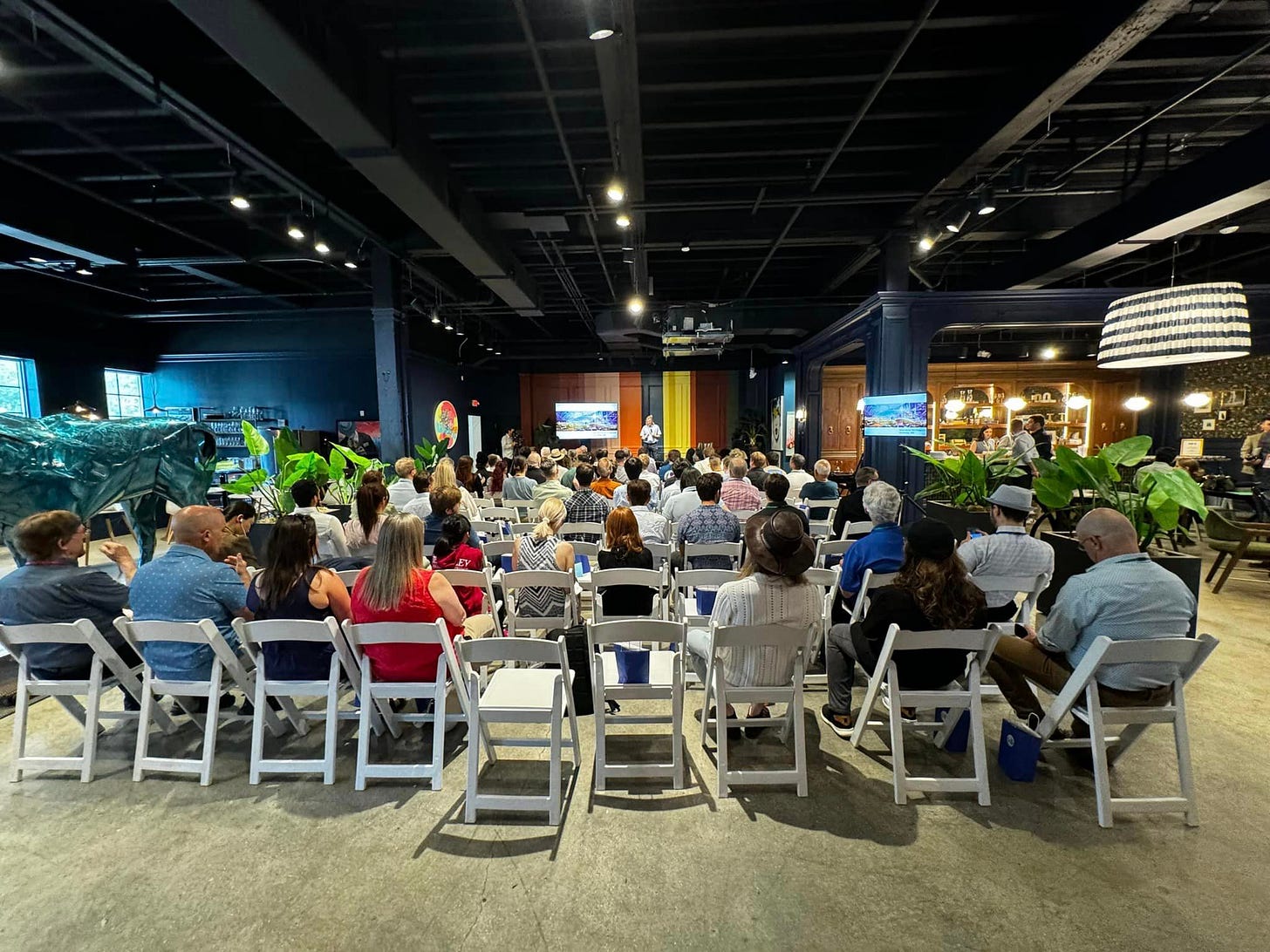
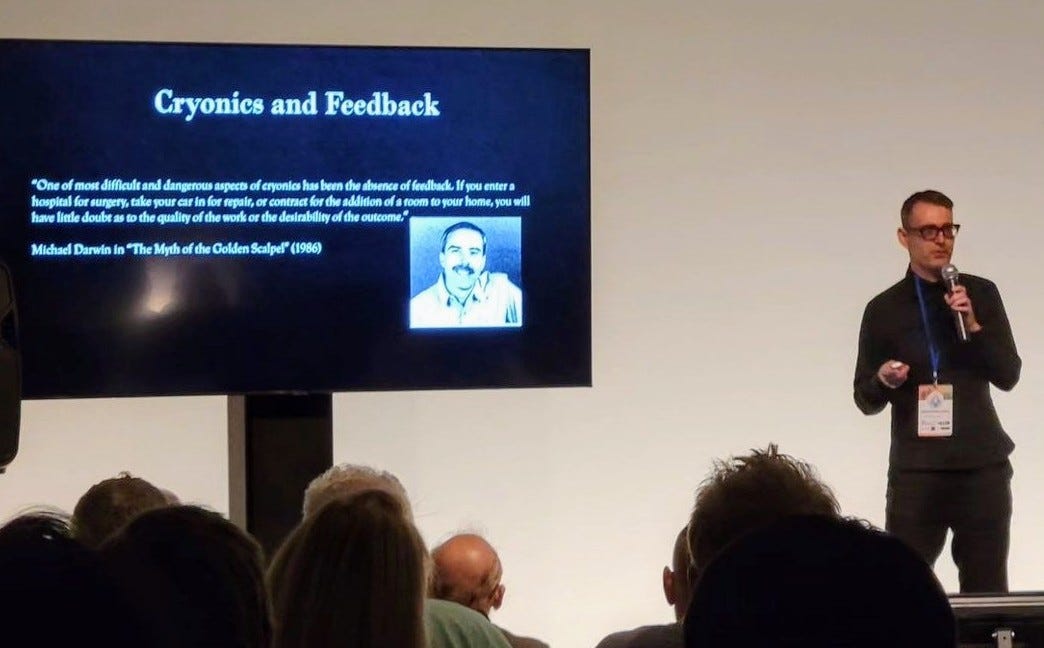
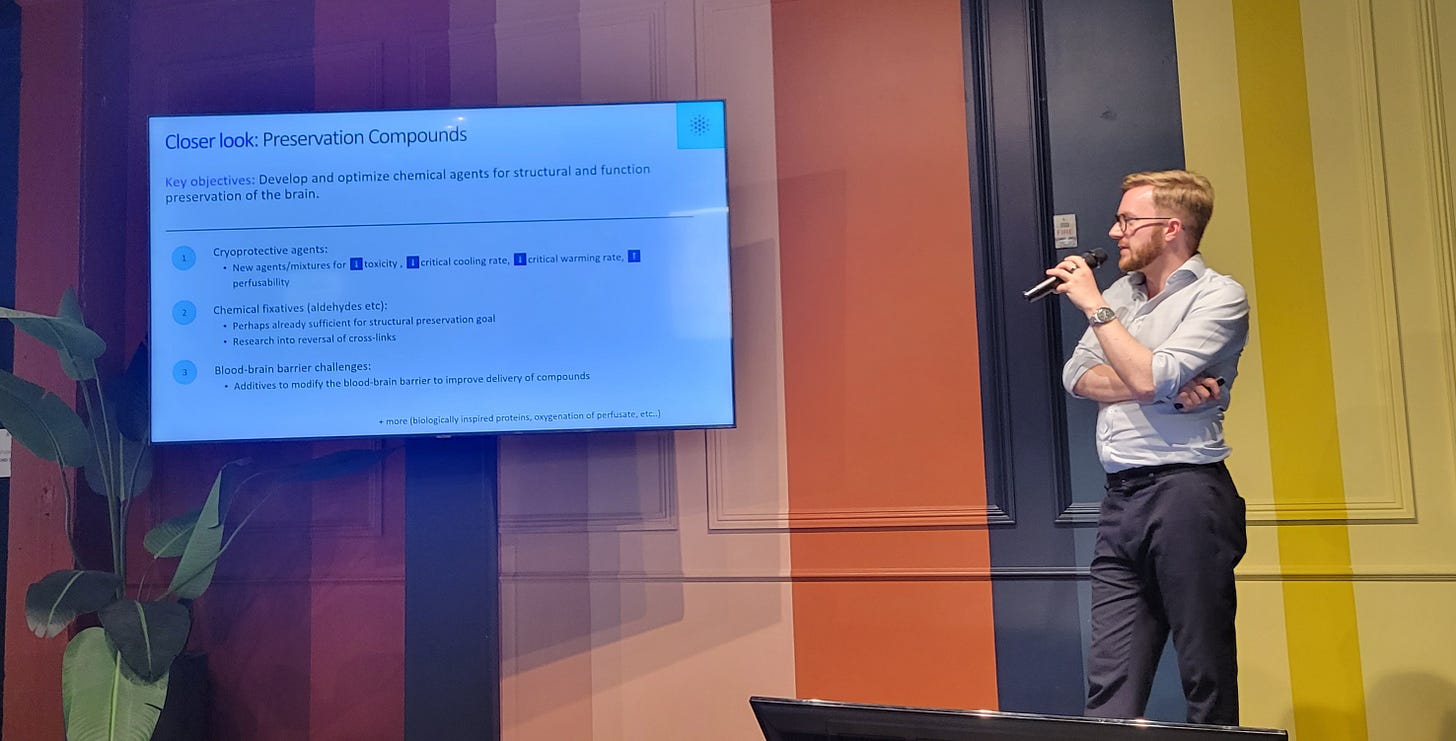
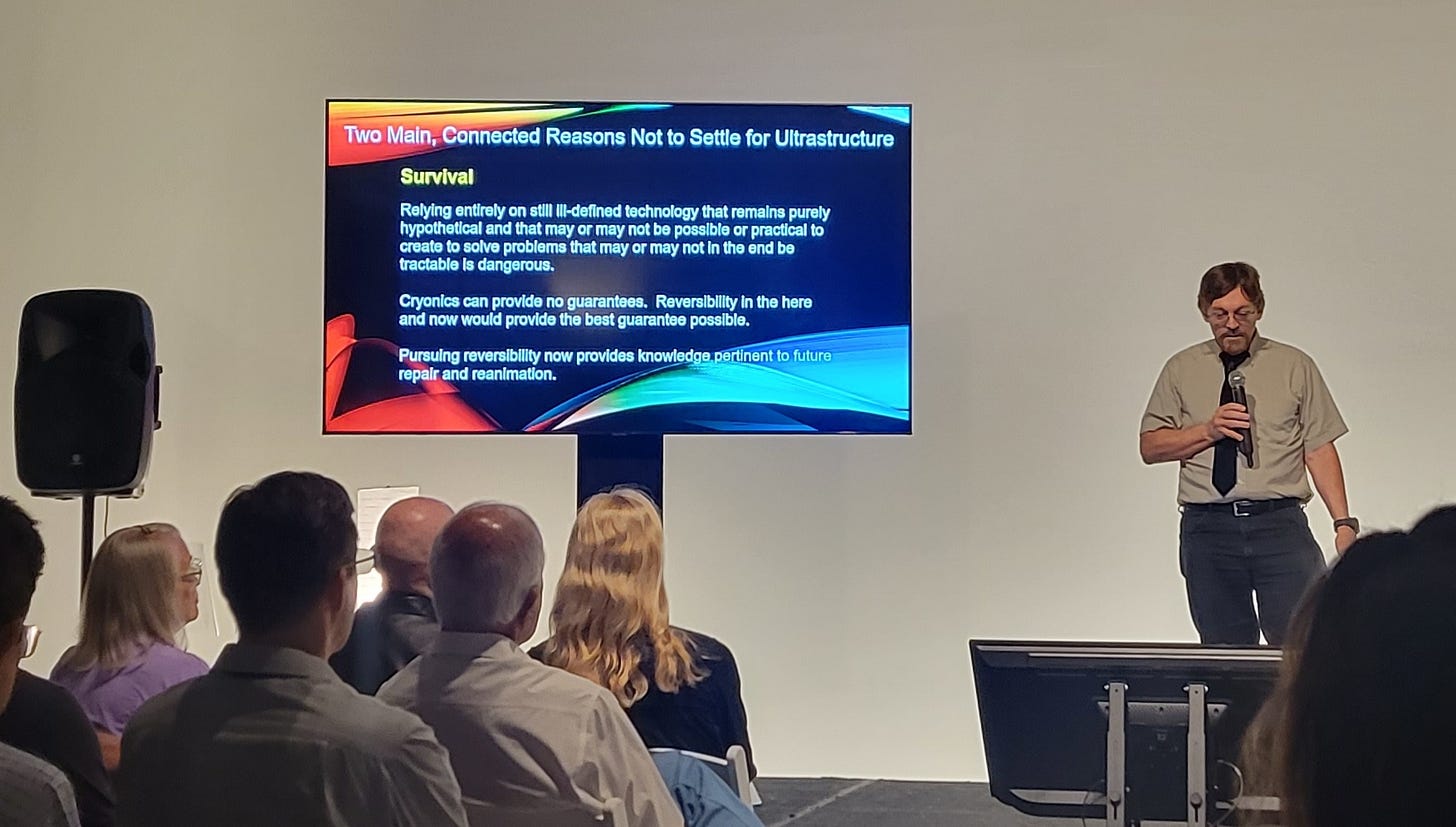
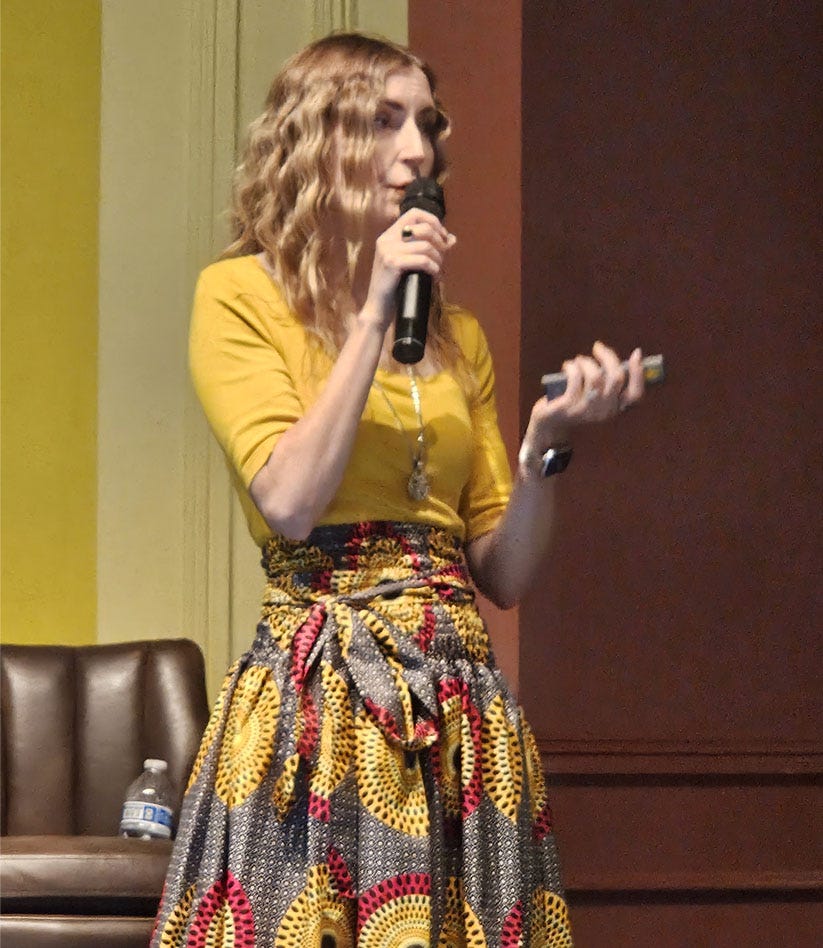
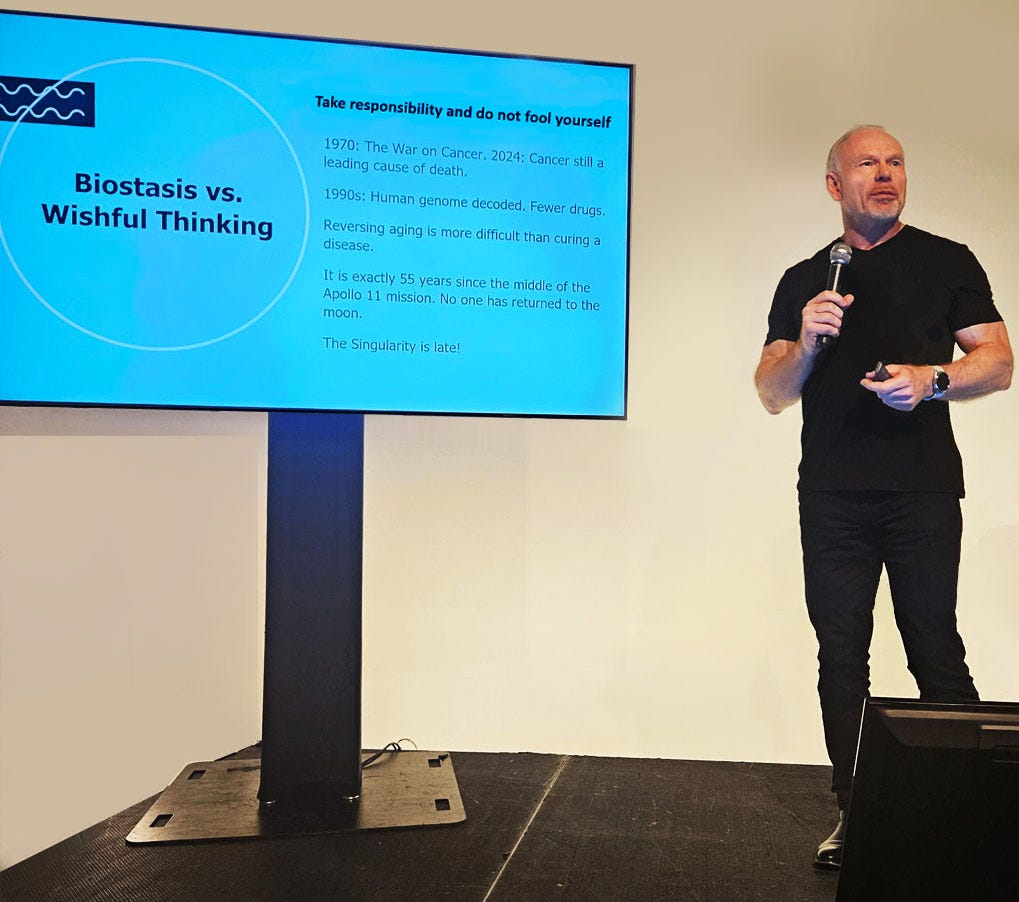

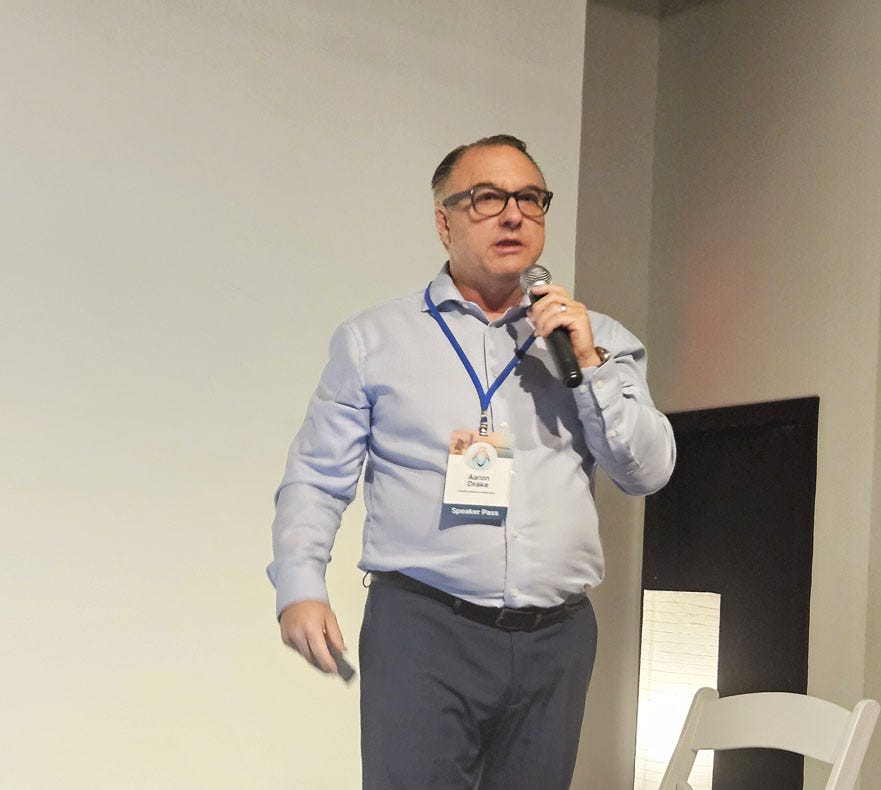
Pretty fair minded and accurate summary, imo.
Rudi Hoffman